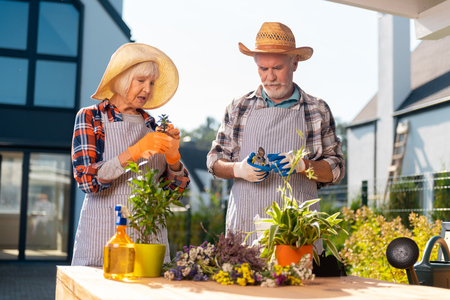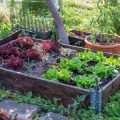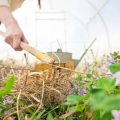1. Introduction to Fungal Diseases in Home Gardens
Fungal diseases are among the most common problems that home gardeners face in the United States. These microscopic organisms thrive in warm, damp environments and can quickly spread through soil, water, air, or even gardening tools. While not all fungi are harmful, many can seriously affect the health of your garden plants if left unchecked.
Understanding fungal diseases is essential for maintaining a thriving home garden. They can cause unsightly spots on leaves, stunted growth, fruit rot, and even plant death. Many popular garden plants—including tomatoes, roses, cucumbers, and zucchini—are especially vulnerable to fungal infections.
Why Fungal Diseases Matter
When fungal issues arent addressed early, they can reduce crop yields, weaken ornamental plants, and spread to other areas of your yard or neighborhood. Learning how to identify the signs of common fungal diseases allows you to act quickly and protect your plants before serious damage occurs.
How Fungi Affect Different Garden Plants
The impact of fungal diseases varies depending on the type of plant and the specific fungus involved. Heres a quick overview of how some common garden plants are affected:
| Plant Type | Common Fungal Disease | Typical Symptoms |
|---|---|---|
| Tomatoes | Early Blight (Alternaria) | Dark leaf spots with yellow halos; fruit rot |
| Cucumbers | Powdery Mildew | White powdery coating on leaves; distorted growth |
| Roses | Black Spot | Black spots on leaves; yellowing and drop-off |
| Zucchini | Downy Mildew | Pale yellow patches on upper leaf surfaces; fuzzy growth underneath |
The Importance of Early Identification and Prevention
Catching fungal problems early makes them much easier to manage. By learning what symptoms to look out for and taking simple preventive steps—like watering at the base of plants, improving air circulation, and rotating crops—you can reduce the risk of infection dramatically.
A healthy garden starts with awareness. In this series, well walk through common types of fungal diseases found in U.S. home gardens and share practical tips on how to prevent them from spreading.
2. Identifying Common Fungal Diseases
Fungal diseases can sneak up on your home garden, affecting everything from vegetables to flowers and shrubs. Being able to recognize them early is key to keeping your garden healthy. Below is a simple guide to help you spot some of the most common fungal problems based on how they look and where they show up.
Powdery Mildew
This fungus looks like someone dusted your plants with white flour. It often shows up on the tops of leaves but can also cover stems and buds.
What to Look For:
- White or gray powdery spots on leaves, stems, or flowers
- Leaves may curl or turn yellow
- Common in warm, dry days with cool nights
Rust
Rust fungi create orange, rusty-looking spots that usually appear on the undersides of leaves.
What to Look For:
- Tiny, rust-colored pustules under leaves
- Leaves may wilt, yellow, or drop off early
- Often affects hollyhocks, snapdragons, and beans
Blight
Blight causes rapid browning and dying of plant tissue—think tomatoes suddenly turning brown and mushy in spots.
What to Look For:
- Dark, water-soaked spots on leaves or stems
- Rapid spread leading to plant collapse
- Common types include early blight and late blight in tomatoes and potatoes
Leaf Spot
This group of diseases causes small round spots that may be brown, black, or tan, often with a yellow halo around them.
What to Look For:
- Circular spots scattered across foliage
- Spots may merge together in severe cases
- Affects vegetables like lettuce and cucumbers as well as ornamental plants
Quick Reference Table: Common Fungal Diseases
| Disease | Main Symptoms | Affected Plants |
|---|---|---|
| Powdery Mildew | White powdery coating on leaves/stems; leaf curling | Zucchini, roses, lilacs, squash |
| Rust | Orange-brown spots under leaves; premature leaf drop | Hollyhocks, beans, daylilies, snapdragons |
| Blight (Early/Late) | Dark lesions; plant wilting or rotting quickly | Tomatoes, potatoes, peppers |
| Leaf Spot | Circular brown/black spots; yellowing around edges | Lettuce, cucumbers, hydrangeas, iris |
If you notice any of these signs in your garden, it’s important to act quickly. Early identification makes it easier to manage fungal issues before they spread too far.
![]()
3. Causes and Conditions That Encourage Fungal Growth
Fungal diseases in home gardens often start when the environment becomes just right for spores to thrive. Understanding what conditions promote fungal growth can help gardeners take preventive steps before problems arise. Let’s break down the key factors that contribute to fungal infections in American backyard gardens.
Moisture: Too Much of a Good Thing
Fungi love moisture. Wet leaves, soggy soil, and high humidity create the perfect breeding ground for many common garden fungi like powdery mildew, downy mildew, and blight. Overwatering or watering at the wrong time of day—especially in the evening—can leave plants damp overnight, giving fungal spores plenty of time to settle in.
Tips to Manage Moisture:
- Water early in the morning so plants dry off during the day.
- Avoid overhead watering; use drip irrigation or soaker hoses instead.
- Make sure pots and garden beds have good drainage.
Poor Airflow: A Hidden Problem
Good airflow helps keep leaves dry and reduces the humidity around plants. When plants are packed too closely together or surrounded by solid structures like fences and walls, air cant circulate well, trapping moisture and encouraging fungi to grow.
How to Improve Air Circulation:
- Space plants according to their needs—don’t overcrowd your garden beds.
- Prune regularly to open up dense foliage.
- If possible, position your garden where there’s a natural breeze.
Soil Health: The Foundation of Disease Prevention
Healthy soil supports strong plant growth and helps prevent fungal diseases from taking hold. Compacted or poorly drained soil can retain too much water, while nutrient-deficient soil stresses plants, making them more vulnerable to infections.
Signs of Unhealthy Soil vs Healthy Soil:
| Unhealthy Soil | Healthy Soil |
|---|---|
| Stays soggy after rain | Drains well but retains moisture |
| Lacks earthworms and other life | Full of worms, insects, and microbial activity |
| Hard or compacted texture | Crumbly and loose structure |
| No smell or sour odor | Fresh earthy smell |
Tips for Better Soil Health:
- Add compost annually to improve structure and nutrients.
- Avoid tilling too often—it can disrupt beneficial organisms.
- Test your soil every few years to monitor pH and fertility levels.
Climate Factors: Know Your Region
The local climate plays a big role in how likely your garden is to face fungal issues. Warm, humid areas like the Southeast are especially prone to fungal outbreaks, while dry climates may see fewer problems—but even occasional rain can trigger an outbreak if other conditions are right.
Common Climate-Related Risks by Region:
| Region | Main Risk Factors |
|---|---|
| Southeast (e.g., Florida, Georgia) | High humidity, frequent rainstorms |
| Northeast (e.g., New York, Pennsylvania) | Damp springs and falls with cool temps |
| Midwest (e.g., Illinois, Ohio) | Heavy summer rains followed by heat waves |
| Southwest (e.g., Arizona, New Mexico) | Irrigation-related overwatering in dry climates |
| Pacific Northwest (e.g., Oregon, Washington) | Mild temperatures with steady rainfall year-round |
By understanding how moisture, airflow, soil quality, and climate interact in your own backyard, you can better prepare your garden against unwanted fungal visitors. Simple changes in watering habits or planting layout can make a big difference in keeping your home garden healthy all season long.
4. Effective Prevention Strategies
Preventing fungal diseases in your home garden doesnt have to be complicated. By following a few eco-friendly and practical steps, you can reduce the chances of infection and help your plants thrive. Below are some tried-and-true strategies that work well for U.S. gardeners.
Crop Rotation
Rotating crops is one of the easiest ways to break the cycle of fungal diseases. Many fungi live in the soil and infect the same plant families year after year. By changing where you plant certain crops each season, you can help reduce the buildup of pathogens in the soil.
Example Crop Rotation Plan
| Year | Bed A | Bed B | Bed C |
|---|---|---|---|
| Year 1 | Tomatoes (Nightshade) | Carrots (Root crops) | Beans (Legumes) |
| Year 2 | Beans (Legumes) | Tomatoes (Nightshade) | Carrots (Root crops) |
| Year 3 | Carrots (Root crops) | Beans (Legumes) | Tomatoes (Nightshade) |
Proper Spacing and Airflow
Crowded plants create humid conditions that fungi love. Make sure you follow spacing guidelines on seed packets or plant labels to allow for good airflow between plants. This helps leaves dry quickly after rain or watering, making it harder for fungi to spread.
Selecting Resistant Varieties
Selecting disease-resistant plant varieties is a smart way to prevent problems before they start. Many seed companies in the U.S. label their products with resistance codes like “VFN” for tomatoes, which indicates resistance to Verticillium wilt, Fusarium wilt, and nematodes.
Common Resistant Plant Varieties
| Plant | Disease Resistance Label | Description |
|---|---|---|
| Tomato Celebrity | VFN, TMV | Tolerates several common fungal and viral diseases |
| Cucumber Marketmore 76 | PM, DM, CMV | Resistant to powdery mildew and downy mildew |
| Zucchini Dunja | PMR | Bred for strong resistance to powdery mildew |
Avoid Overhead Watering
Watering from above wets the leaves, creating an ideal environment for fungi to grow. Instead, use drip irrigation or water at the base of the plant early in the morning so excess moisture can evaporate throughout the day.
Keep Your Garden Clean
Certain fungi can survive on dead leaves and stems. Be sure to remove infected plant debris at the end of the season and keep weeds under control, as they can also harbor disease.
Quick Tips for Fungal Disease Prevention:
- Avoid overcrowding: Give plants room to breathe.
- Irrigate wisely: Water at soil level and avoid wetting foliage.
- Select resistant varieties: Check seed packets for disease-resistance codes.
- Cultivate healthy soil: Add compost and rotate crops regularly.
- Cull infected plants: Remove sick plants promptly to stop spread.
Taking these simple steps can go a long way toward keeping your home garden healthy and productive throughout the growing season.
5. Treatment Options for Infected Plants
When fungal diseases show up in your home garden, its important to act quickly and use the right treatment methods. There are several options available, from store-bought fungicides to natural remedies you may already have at home. Heres a simple guide to help you choose the best approach for your plants.
Organic and Chemical Fungicides
Most U.S. garden centers carry a variety of organic and chemical fungicides. Both types can be effective, but they work differently and may be better suited for different gardeners or plant types.
| Type | Common Examples | Best For | Notes |
|---|---|---|---|
| Organic Fungicides | Copper-based sprays, sulfur dust, neem oil | Edible plants, eco-conscious gardeners | Less harsh on beneficial insects and soil; may need more frequent application |
| Chemical Fungicides | Chlorothalonil, mancozeb, myclobutanil | Severe infections or ornamental plants | Longer-lasting; follow label instructions carefully to avoid overuse |
Natural Remedies You Can Try at Home
If you prefer a DIY approach or want to try something before heading to the store, there are a few natural treatments that may help control mild fungal issues:
- Baking Soda Spray: Mix 1 tablespoon of baking soda with 1 gallon of water and a few drops of dish soap. Spray on affected leaves weekly.
- Milk Spray: Mix 1 part milk with 2 parts water. This is especially useful against powdery mildew.
- Neem Oil: A natural oil extracted from the neem tree that disrupts fungal growth and also helps with pests.
When to Apply Treatments
The timing of application plays a big role in effectiveness. Here are some tips:
- Early Morning or Late Afternoon: Avoid spraying during hot midday sun to prevent leaf burn.
- Dry Days: Apply when no rain is expected for at least 24 hours so the treatment has time to work.
- At First Sign of Disease: Don’t wait—fungal spores spread fast, so early action is key.
- Repeat as Needed: Follow the label for reapplication frequency—typically every 7-14 days during active infection periods.
A Helpful Tip:
No matter which treatment you choose, always test it on a small area first. Some plants can be sensitive, even to organic products.
Treating fungal diseases takes patience and consistency, but with the right tools and timing, your garden can bounce back beautifully.
6. When to Seek Expert Help
Even the most attentive home gardeners can sometimes run into fungal problems that are tough to manage on their own. While many common fungal diseases can be treated with store-bought fungicides or natural remedies, there are times when professional help is the best route. Knowing when to reach out to experts can save your plants—and your time.
Signs That Its Time to Call in a Pro
If youve tried several treatments and the issue keeps coming back or getting worse, it might be time to consult a local extension service or a certified horticulturist. Here are some red flags to watch for:
| Sign | What It Might Mean | Why You Need Help |
|---|---|---|
| Persistent leaf spots or mold despite treatment | The disease may be misidentified or resistant to over-the-counter solutions | A specialist can identify the exact fungus and recommend targeted treatments |
| Rapid plant decline across multiple species | Could indicate soil-borne fungi or widespread infection | Professional testing can confirm the source and suggest appropriate soil management strategies |
| Mushroom growth or rot at plant bases or roots | Potential root rot or fungal decay deep in the soil | Experts have tools to inspect root systems and provide long-term solutions |
| No improvement after multiple DIY attempts | The issue may require stronger, regulated fungicides not available to homeowners | A licensed applicator can use products safely and legally |
Where to Find Help
You don’t have to figure it all out alone. In the U.S., every state has a Cooperative Extension Service—usually affiliated with a land-grant university—that offers free or low-cost gardening support. They often have master gardeners and plant pathologists who can help diagnose issues and recommend practical solutions.
Helpful Resources Include:
- Your Local County Extension Office: Most offer diagnostic clinics and expert advice tailored to your region’s climate and pests.
- State University Plant Clinics: Many universities have labs where you can send samples for identification.
- Certified Horticulturists: These professionals can visit your garden, assess plant health, and create customized care plans.
- Online Extension Databases: Sites like eXtension.org offer research-based articles and forums for gardeners across the U.S.
A Quick Tip:
If youre unsure whether its time to seek help, take clear photos of affected plants and bring them along with a sample (sealed in a plastic bag) to your local extension office. The more information you provide, the better their guidance will be.
Knowing when an issue is too complex for at-home care is part of being a smart gardener. Don’t hesitate to lean on experts—they’re there to help your garden thrive.


